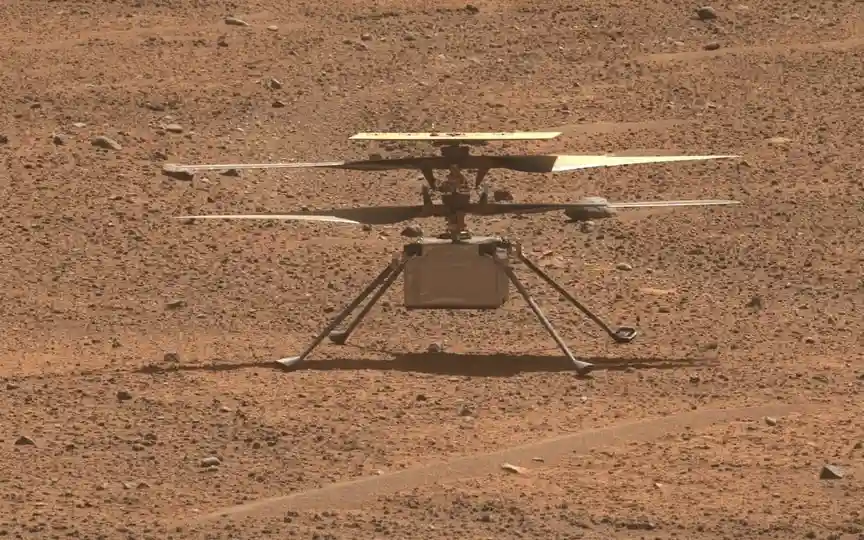NASA Rover Captures Historic Ingenuity Mars Helicopter Flight on Martian Surface
NASA’s rover on Mars has successfully recorded extraordinary video footage of its helicopter in flight and during landing, marking a significant achievement. The Martian atmosphere, which is considerably thinner than Earth’s, poses challenges for takeoff. Nevertheless, NASA’s experimental helicopter, Ingenuity, was specifically designed to overcome these adverse conditions by utilizing its unique rotor. Despite initial expectations of only five flights, this compact robot, boasting a four-foot wingspan, has impressively completed over 50 successful flights.
The Watchful Eye of Perseverance
Recently, NASA’s large Perseverance rover filmed the helicopter‘s entire 54th flight in early August. During the flight, there was a small problem that caused the helicopter to drop quickly, but NASA used this flight to check that its control system was still working properly. And it did.
Flight sequence described in detail
In the video, Ingenuity starts its rotor at the very bottom, about 5 seconds into the video. Then, at the 15-second mark, the robot will take off and hover about 16 feet above the Martian soil before gently landing again.
Let’s look for clues about ancient life
Perseverance, the rover, took this clear video from 180 feet away. Perseverance explores the rocks and soil of Mars with her friend Ingenuity, a helicopter. They look for signs of life, such as special patterns or substances that could indicate that living things existed in the past.
One big goal of Perseverance on Mars is to learn about astrobiology, which aims to find signs of ancient tiny life forms. NASA explained that they were looking for things that only living things could have done. So far, there is no evidence of life on Mars, but there may have been simple forms of life in hidden caves or far underground. Scientists also believe there may be the possibility of life in places like the oceans of Enceladus and Europa, which are moons of other planets, even further out in space than Mars.




